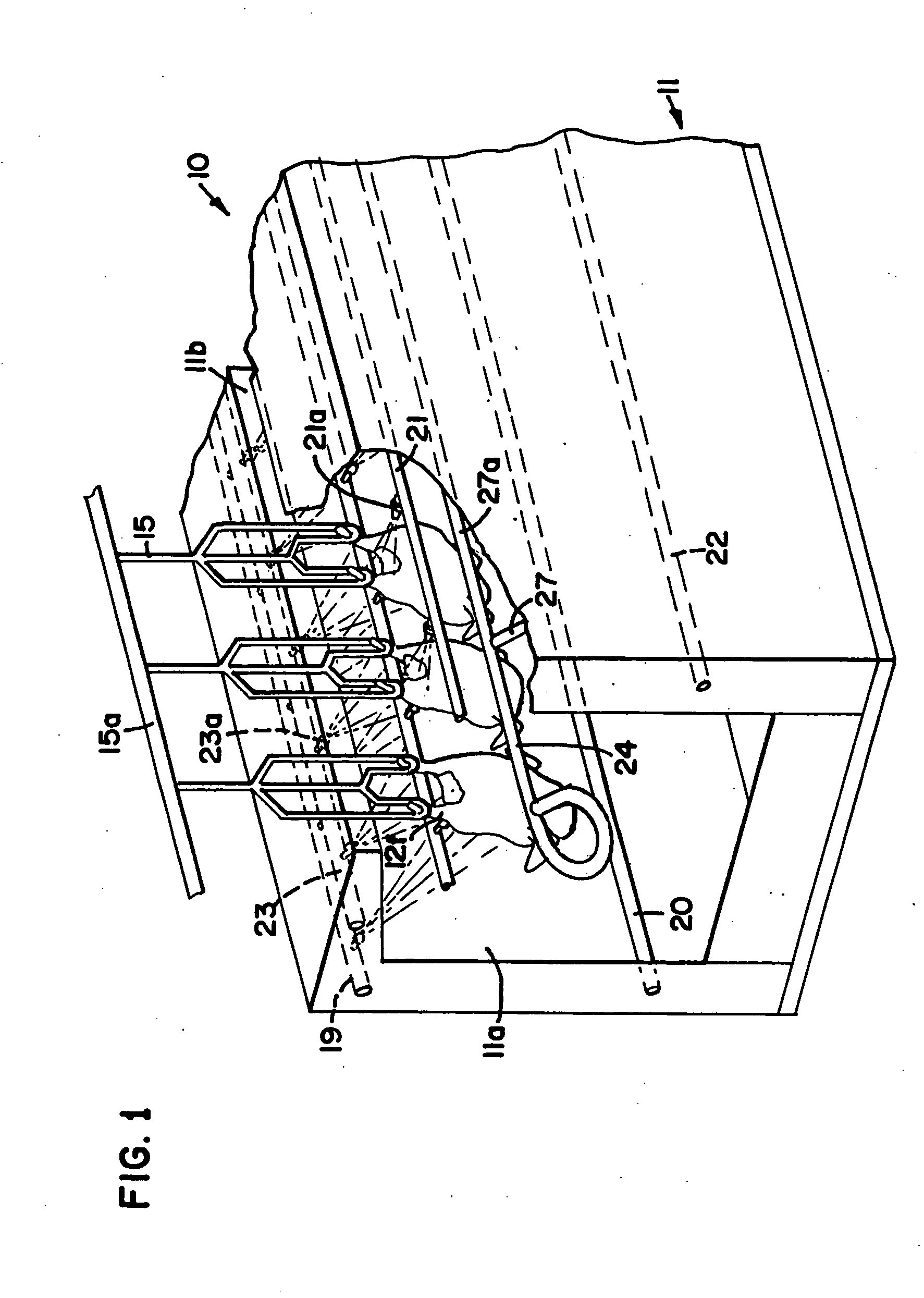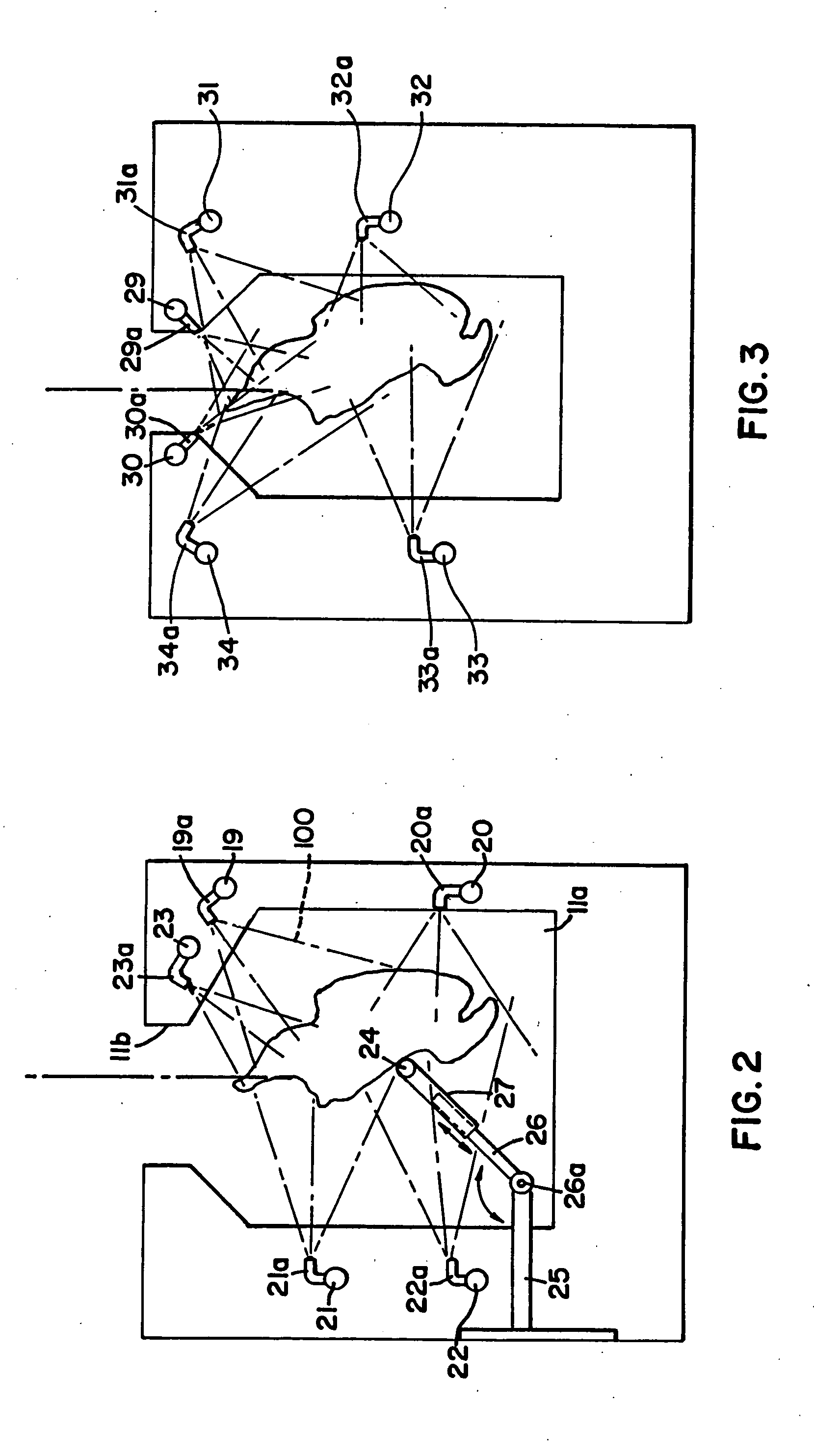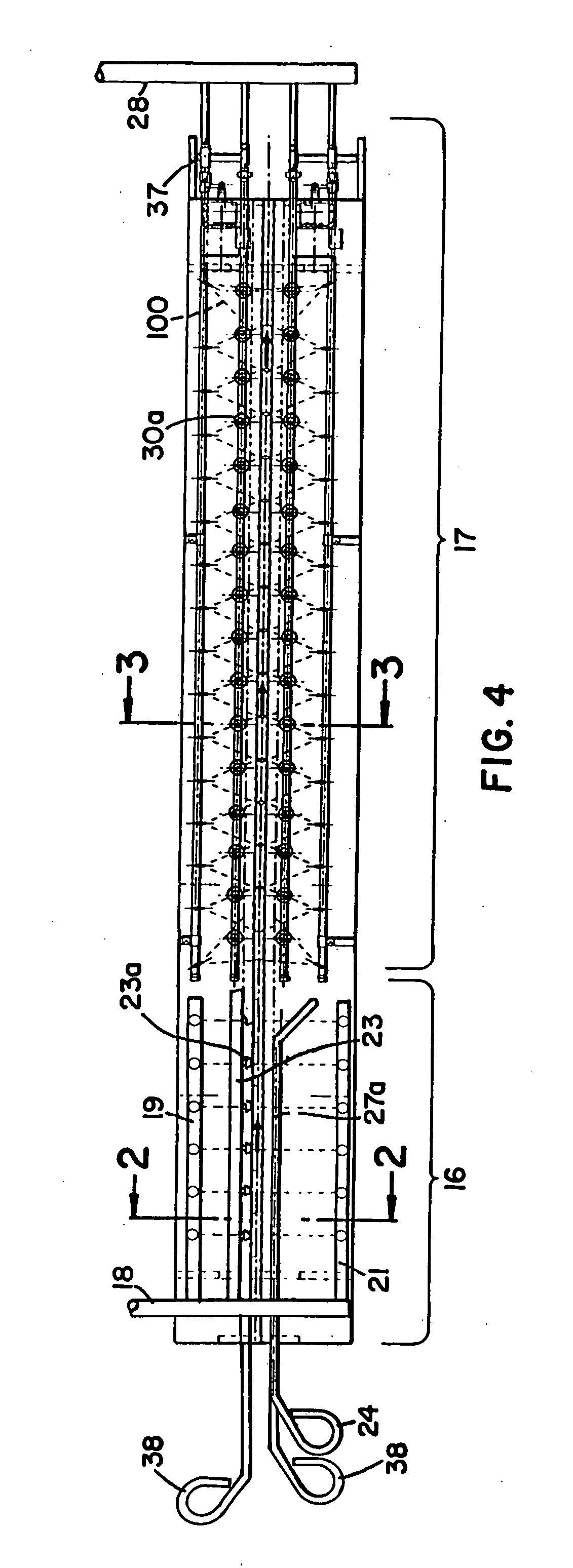Apparatus and method for cleaning poultry
- Summary
- Abstract
- Description
- Claims
- Application Information
AI Technical Summary
Benefits of technology
Problems solved by technology
Method used
Image
Examples
example 1
0.18 Second Exposure Time to Each Spray Stream (6 Inches on Center)
[0039]
Volume of Water (to Nearest 10 mL)Delivered Into the Cavity per Spray StreamLine Pressure30 mL40 mL60 mL80 mL10 psig00+++20 psig00+++
example 2
0.18 Second Exposure Time to Each Spray Stream (3 Inches on Center)
[0040]
Volume of Water (to Nearest 10 mL)Delivered Into the Cavity per Spray StreamLine Pressure30 mL40 mL60 mL80 mL10 psig0++++20 psig0+++++
example 3
0.36 Second Exposure Time to Each Spray Stream (6 Inches on Center)
[0041]
Volume of Water (to Nearest 10 mL)Delivered Into the Cavity per Spray StreamLine Pressure40 mL60 mL80 mL110 mL10 psig0+++++20 psig++++++
PUM
 Login to View More
Login to View More Abstract
Description
Claims
Application Information
 Login to View More
Login to View More - R&D
- Intellectual Property
- Life Sciences
- Materials
- Tech Scout
- Unparalleled Data Quality
- Higher Quality Content
- 60% Fewer Hallucinations
Browse by: Latest US Patents, China's latest patents, Technical Efficacy Thesaurus, Application Domain, Technology Topic, Popular Technical Reports.
© 2025 PatSnap. All rights reserved.Legal|Privacy policy|Modern Slavery Act Transparency Statement|Sitemap|About US| Contact US: help@patsnap.com



